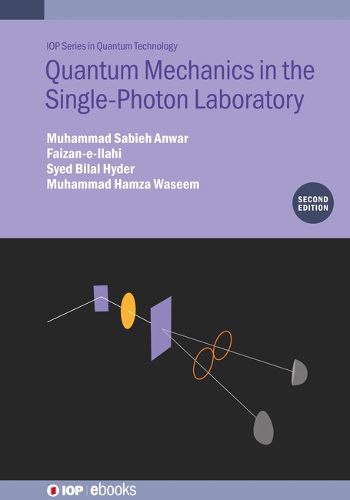Readings Newsletter
Become a Readings Member to make your shopping experience even easier.
Sign in or sign up for free!
You’re not far away from qualifying for FREE standard shipping within Australia
You’ve qualified for FREE standard shipping within Australia
The cart is loading…






This title is printed to order. This book may have been self-published. If so, we cannot guarantee the quality of the content. In the main most books will have gone through the editing process however some may not. We therefore suggest that you be aware of this before ordering this book. If in doubt check either the author or publisher’s details as we are unable to accept any returns unless they are faulty. Please contact us if you have any questions.
This book is valuable for laboratory developers, researchers and teachers who would like to recreate a similar suite of experiments for students and early career researchers. These experiments enliven theoretical descriptions of key ideas from quantum information and quantum computing, providing accessible means to generate, manipulate and measure quantum states, and understand their implications for the foundations of quantum mechanics. This new edition features additional experiments related to quantum entanglement and non-local quantum erasure and has restructured previous descriptions. Data processing in an open-source language is described. The appendix on programming FGPAs is considerably enhanced.
Key Features:
Worked examples showing basic calculations for computing probabilities from projective measurements, the effect of unitary operators on states, and computing density matrices, expectation values, fidelities, and purities. An intuitive description of ideas from quantum information and quantum optics. Correlating experimental data, which is statistical in nature, with predictions of quantum optical theory. Experiments can be virtually recreated using data from real experiments to manipulate, compute and plot expectation values, errors, density matrices etc. Each chapter begins with an introduction and discusses the placement of the chapter's material in the wider scheme.
$9.00 standard shipping within Australia
FREE standard shipping within Australia for orders over $100.00
Express & International shipping calculated at checkout
This title is printed to order. This book may have been self-published. If so, we cannot guarantee the quality of the content. In the main most books will have gone through the editing process however some may not. We therefore suggest that you be aware of this before ordering this book. If in doubt check either the author or publisher’s details as we are unable to accept any returns unless they are faulty. Please contact us if you have any questions.
This book is valuable for laboratory developers, researchers and teachers who would like to recreate a similar suite of experiments for students and early career researchers. These experiments enliven theoretical descriptions of key ideas from quantum information and quantum computing, providing accessible means to generate, manipulate and measure quantum states, and understand their implications for the foundations of quantum mechanics. This new edition features additional experiments related to quantum entanglement and non-local quantum erasure and has restructured previous descriptions. Data processing in an open-source language is described. The appendix on programming FGPAs is considerably enhanced.
Key Features:
Worked examples showing basic calculations for computing probabilities from projective measurements, the effect of unitary operators on states, and computing density matrices, expectation values, fidelities, and purities. An intuitive description of ideas from quantum information and quantum optics. Correlating experimental data, which is statistical in nature, with predictions of quantum optical theory. Experiments can be virtually recreated using data from real experiments to manipulate, compute and plot expectation values, errors, density matrices etc. Each chapter begins with an introduction and discusses the placement of the chapter's material in the wider scheme.